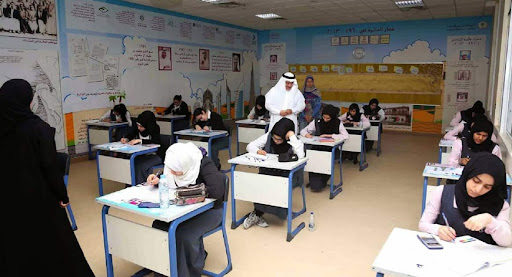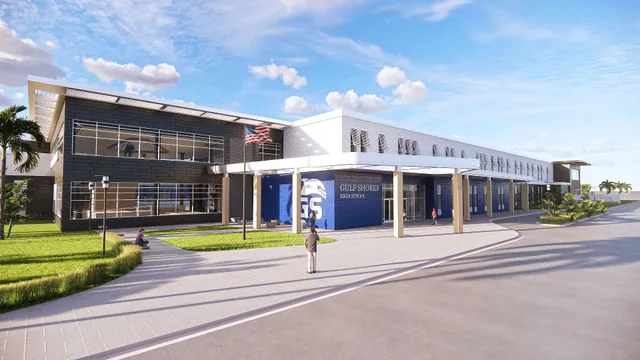Gulf Education is on the edge of a major transformation as governments across the region are expected to boost education budgets by 25% in 2026. This increase is not just a number it reflects a strong commitment to building smarter, more competitive, and future-ready societies.
For decades, Gulf countries have invested in infrastructure and oil-based economies. Now, leaders are realizing the power of education in shaping long-term growth. A 25% rise in funding signals that Gulf Education is becoming a top priority in regional development strategies.
Why Gulf Education Needs a Bigger Budget

The upcoming 25% increase in funding aims to solve several pressing issues facing Gulf Education today:
- Outdated curriculum models
- Shortage of skilled educators
- Low global rankings in innovation and critical thinking
- Limited inclusion of modern digital tools
- Need to align skills with future job markets
Governments in the Gulf region like the UAE, Saudi Arabia, and Qatar are pushing toward modernizing their educational systems to meet the expectations of a tech-driven global economy.
Where the Extra Budget Will Go
The expanded budget for Gulf Education in 2026 is expected to focus on several key areas:
- Digital Transformation
From smart classrooms to AI-enabled learning tools, education in the Gulf will shift toward high-tech teaching and learning systems. Schools and universities will be equipped with virtual labs, interactive whiteboards, and personalized learning platforms. - Teacher Training and Recruitment
A major share of the 25% increase will be used to hire skilled teachers and train existing staff in modern teaching methods. Gulf Education departments want their students to compete globally, and that starts with better teachers. - STEM and Innovation Centers
The new budget will support the creation of STEM labs and innovation hubs in schools and colleges. These centers will focus on science, coding, robotics, and problem-solving skills from a young age. - Inclusive and Special Education
Another major target of the Gulf Education surge is to improve access for students with special needs. Dedicated programs, better facilities, and teacher training will be introduced to support inclusive learning. - Scholarships and Research Funding
Top-performing students in the region will benefit from new scholarship programs. At the same time, research institutions and universities will receive greater funds to support local innovation.
Country-wise Highlights in Gulf Education Budget Plans
United Arab Emirates
The UAE has long emphasized the importance of knowledge-based growth. With the upcoming budget surge, the Ministry of Education plans to double the number of AI and coding courses in schools by 2027. The country also aims to train 10,000 teachers under its digital learning initiative.
Saudi Arabia
Saudi Arabia’s Vision 2030 includes strong reforms in the education sector. The new 25% budget increase will help develop vocational programs, expand e-learning platforms, and enhance school infrastructure in rural areas. Gulf Education in Saudi Arabia is expected to become more practical and skills-focused.
Qatar
Qatar is focusing its budget on research and university-level development. The Qatar Foundation and Ministry of Education plan to fund new collaborations with international institutions, promote Arabic content in STEM fields, and support women in higher education.
Oman, Bahrain, and Kuwait
These countries are also part of the Gulf Education transformation. Bahrain is pushing for bilingual education programs, Oman is setting up green schools, and Kuwait is investing in school digitization and early childhood education.
Challenges Ahead for Gulf Education
Despite the budget boost, Gulf Education will face several challenges that need to be addressed:
- Teacher shortage remains a critical issue. Attracting skilled professionals from abroad may be costly and competitive.
- Rural-urban gap in education quality is still wide in some countries. The funds must be distributed fairly to bridge this gap.
- Technological inequality can affect students in remote areas or underfunded schools.
- Resistance to change from traditional systems may slow down innovation, especially in public schools.
Governments will need clear policies, transparency, and strong partnerships with the private sector to make the most of this historic investment.
What This Means for the Region’s Future

A 25% increase in the Gulf Education budget is more than just a financial decision it’s a social, economic, and political statement. The region is moving from an oil-based economy to a brain-based economy. Education is no longer optional; it is the fuel for future progress.
Better education leads to better jobs, stronger economies, and more peaceful, equal societies. It also ensures that young people in the Gulf are prepared for global challenges like climate change, automation, and digital transformation.
According to analysts, if the Gulf Education upgrade is implemented correctly, the region could rise in global education rankings by 2030. More importantly, millions of students will benefit from better facilities, smarter teachers, and modern tools for learning.
Final Thoughts
The massive 25% budget surge for Gulf Education in 2026 is not just good news it’s a powerful step toward shaping a better future. It shows that leaders across the region are willing to invest in people, not just infrastructure.
As Gulf Education systems evolve, the results will speak for themselves: stronger skills, smarter citizens, and a competitive edge in the global economy. The journey won’t be easy, but the destination is worth it.
Also Read –Gulf Travel Boost: Bold Visa Reforms to Ease Access by 2025



